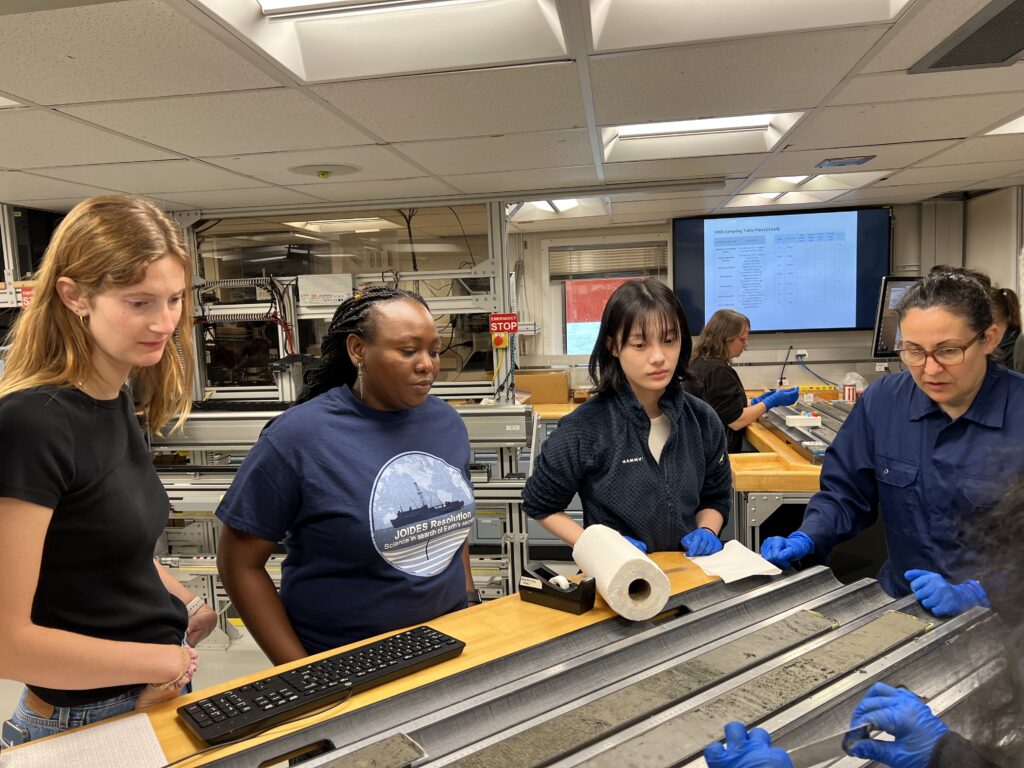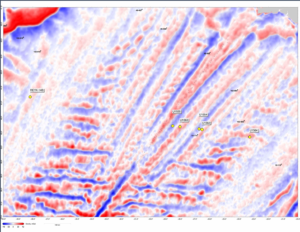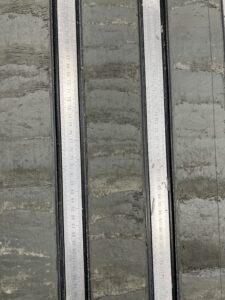
A Brand New Mystery

Core from the seafloor is priceless, it is like a time machine in a plastic tube. Every time a section of core comes up the scientists and technicians on the JR are first people to see it. When the core is first split, we are opening a mystery with chapters millions of years old. All the data that is collected is the evidence needed to put the story back together.

The JR is currently drilling a new site in the Eirik Drift which is a huge deposit of sediment on the ocean floor that wraps around the eastern coast of Greenland. While the southern tip of this drift, so called because of the drifted deposits that are there, has been cored, the area where we are now has not been. This Drift is also located on top of an ancient ridge that runs parallel to the V-Shaped Ridges that Expedition 395 is studying. All of this is very exciting and makes getting as much data as possible from this area a necessity. While we are here, we will be taking replicate samples to be able to correlate our data. In writer’s terms, we will be fact-checking.
When a core is analyzed, physical property measurements are taken. These include how fast P-waves travel though the core and how much natural gamma radiation it puts out. These can indicate how old the sediment is. The core’s magnetic signature will also be recorded along with what types of microfossils are present. When multiple cores are taken, all of this data can be compared and compiled, or correlated, into a profile. Similar measurements from inside the hole are also taken. Putting all of this data together creates the fabric for the story.

Stratigraphic correlators will compare the natural gamma radiation data, which comes out as a vertical graph. They will look at data from each of the holes to see where it lines up and where there are gaps. In this way, they can make a continuous splice of the data which reflects the age of the sediment. When there are gaps, they may talk to the micropaleontologists who can give them fossil data to fill in their splice or to the paleomagnetists who may have age related data for them. In this way, the teams work together will all of the data to come up with a timeline of events, or the fabric for the geological story. This in turn provides a background for the potential environmental story. When the geochemistry is added, it becomes apparent where and when organisms lived (and still live) in the column and the relationship they had/have with the nutrients in the sediments and the water.
The sediments will also provide clues to the mystery. Layers of sand, white and black undulations across the core, indicate the flow strength, layers of ash can be traced to volcanic input;. The grains of sand themselves as well as small stones or other debris floated out by ice during the glacial periods can help in the understanding of where all of the sediment originated. This can indicate how ocean currents, changing over time, have been writing this story.
The cores we are pulling up are amazing and priceless. Layers and layers of information that we have yet to really understand. All of us onboard the JR are involved in a mystery time capsule and we are only beginning to unravel it.
This is brilliant! Thank you so much for sharing. It will take me a while to absorb it, this will fill in my winter evening
I am so glad that you enjoyed it!
Thank you for sharing. Excellent resource of my Physical Geology with Lab students
I am glad that it will be useful to you!